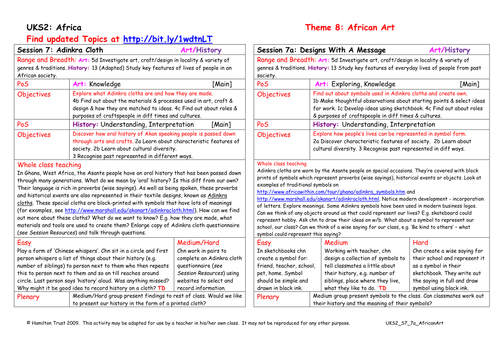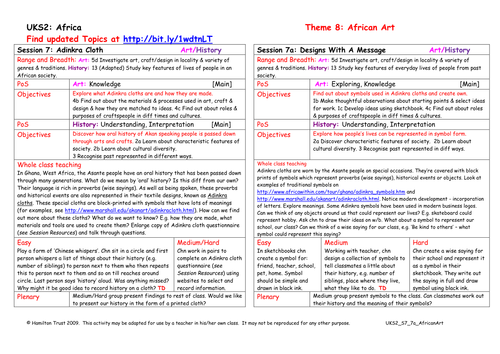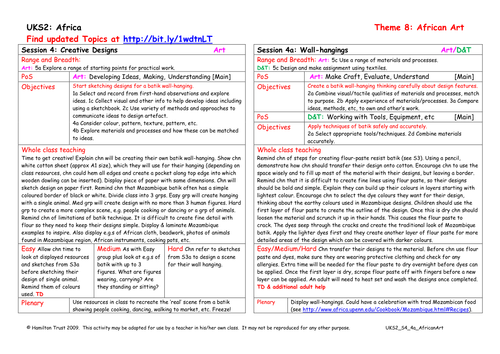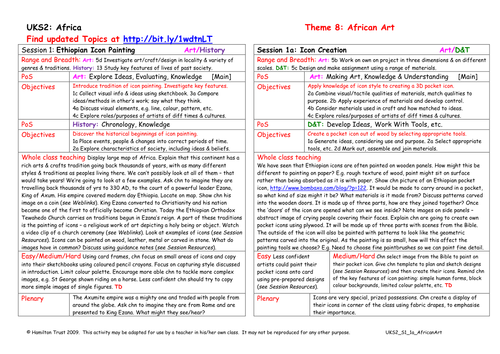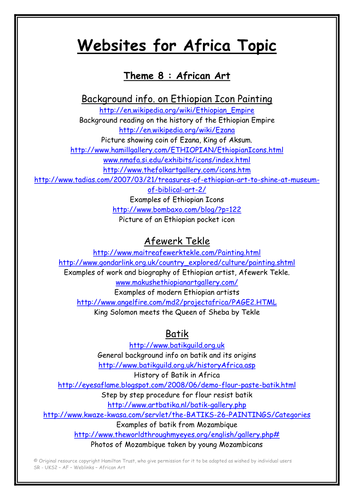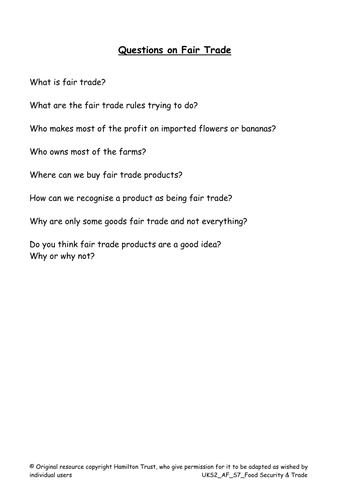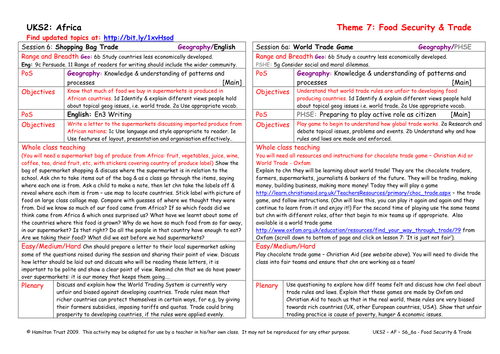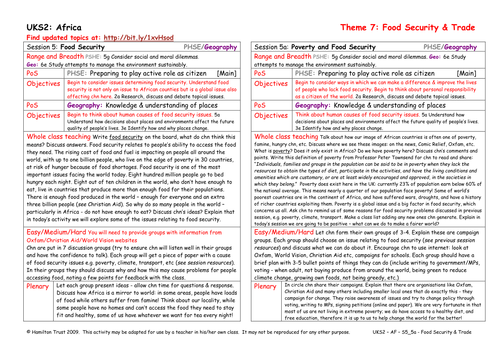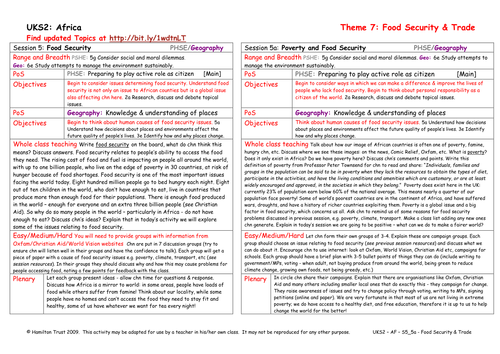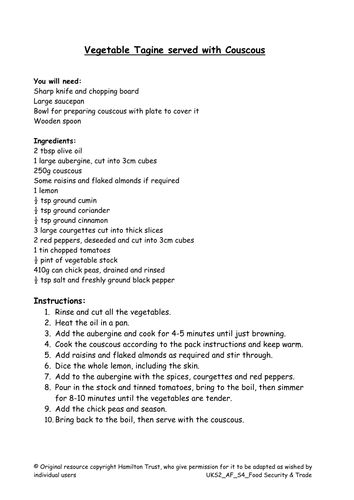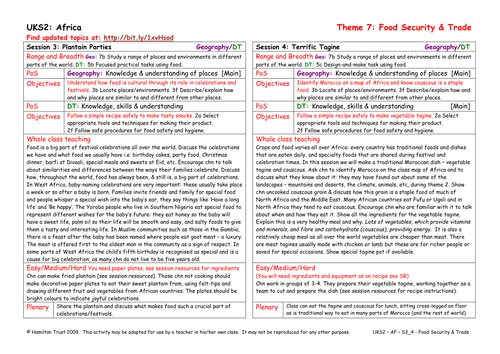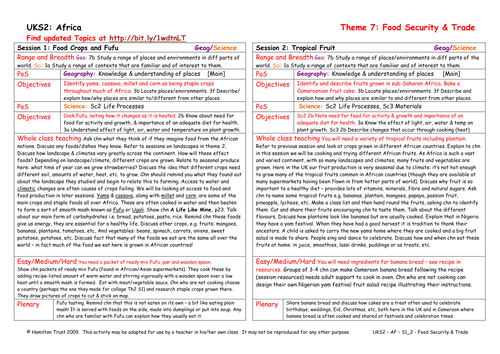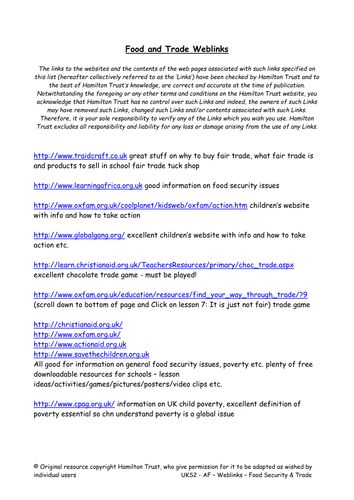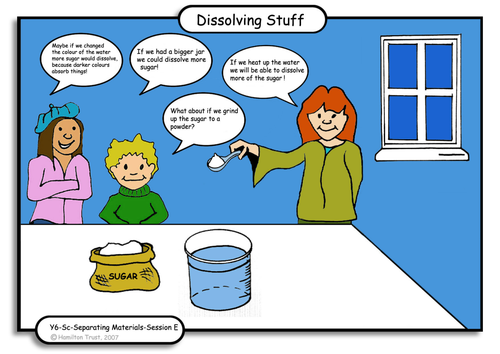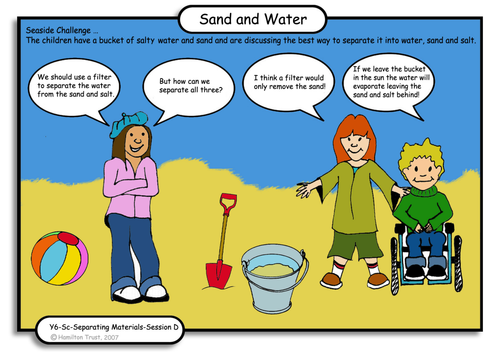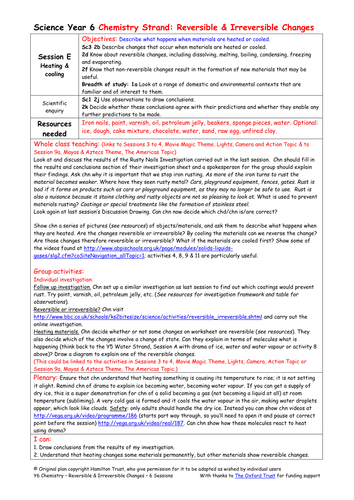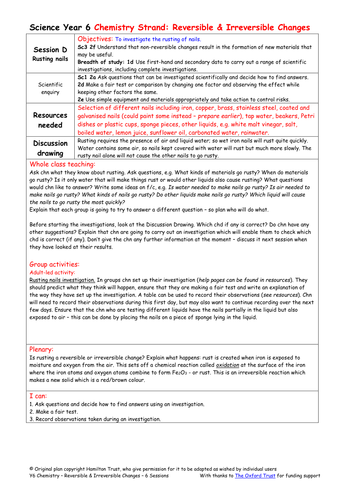
397Uploads
10041k+Views
11644k+Downloads
All resources

Designs With A Message
Adinkra cloths are craft with a message. Children explore the traditional symbols printed on the cloths and create their own symbols to tell a story of their own lives.

Adinkra Cloth
Moving to West Africa, children explore how history of Asante people has been represented through the craft of block printing Adinkra cloths.
Children use web research to find out about history, techniques and processes involved.

Wall hangings
Using the techniques of flour resist batik, children create wall hangings in the style of the Mozambique batik they have studied.
Children are encouraged to carefully select techniques and tools to create a quality product.

Ethiopian Inspiration
Think big and create a class mural based on the work of Afewerk Tekle.
Children work collaboratively to plan and paint a mural with a biblical subject in the same style as Tekle.

Afewerk Tekle
It’s time to come up to date and look at work of a modern Ethiopian painter: Afewerk Tekle.
Children use websites to find out how his work has been influenced by the tradition of icon painting.

Icon Creation
Create an Ethiopian pocket icon. Children explore techniques of painting on wood and create their own icon images based on their studies.

Ethiopian Icon Painting
Take a trip back in time to introduce art of icon painting from ancient kingdom of Ethiopia.
Children explore features of this art form and consider how they were painted and their purpose. They copy small areas of icons to capture style elements.

Fair Trade
Children consider arguments for buying fair trade produce and look at relevant websites including Christian Aid and Oxfam.
Children think about how fair trade does not address causes – unfair trade rules and greedy practices. How can we campaign to change these?

Shopping Bag Trade
Children learn how much of the food we buy in supermarkets is produced in African countries. They discuss this in the light of their knowledge of fair trade and write a letter to the local supermarket to discuss the issues.

Poverty and Food Security
Children think positively about ways in which we can help to improve the lives of people who lack food security. Thinking about our responsibilities as world citizens, children discuss ways of campaigning to change the causes of lack of food in Africa.

Food Security
Children begin to consider issues determining food security. This session helps them to understand that food security is not only an issue for African counties but is a global issue also affecting us here. Children work in groups to discuss different causes.

Terrific Tagine
Children return to the notion of a staple food. They look at uncooked couscous grain and discuss how this grain is a staple of much of North Africa and Middle East. Then children cook vegetable Tagine and enjoy eating it!

Plantain Parties
Children discuss how all cultures have celebrations and festivals – special days in which special foods are eaten and shared. In parts of West Africa a child’s 5th birthday is special as many do not live to be five. Children make fried plantain and decorate plates.

Tropical Fruit
In this session, we identify and describe fruits grown in sub-Saharan Africa. The need for fruit as part of a healthy diet is discussed and children taste some tropical fruits. Children follow a recipe to make Cameroon banana bread.

Food Crops and Fufu
Children are introduced to the idea that there are some staple foods which exist in all cultures. These are usually carbohydrates, and in many African countries they consist of foods made from Maize or corn. Children make fufu.

Investigate dissolving
It’s one lump or two… or even, maybe three or four in this session! Do all soluble materials dissolve in the same way? How much material can you dissolve in water? How can we increase how much material dissolves? Time to find out.
Suitable for Y6 pupils.

Evaporation
Evaporation is the name of the game in this session as children use it to separate materials in solutions. They investigate a variety of liquids to see which leave a residue after evaporation and grow their own salt crystal. Suitable for Y6 pupils.

Separate solids
In this session children start by separating what they already know from what they want to find out, then start to separate materials using sieves of different sizes and magnets. They find out that these methods have real life applications.
Suitable for Y6 pupils.

Heating and cooling
Use findings from Rusty Nails Investigation to plan another test. Look at the changes that occur when common materials are heated, and then decide whether or not cooling will reverse the change. What happens if the materials are first cooled and then heated?
Suitable for Y6 pupils.

Rusting nails
Look at an irreversible change. Children set up an investigation to answer questions about nails rusting. Will they compare nails made from different materials or find out whether or not both water and air are needed for rusting to occur?
Suitable for Y6 pupils.

